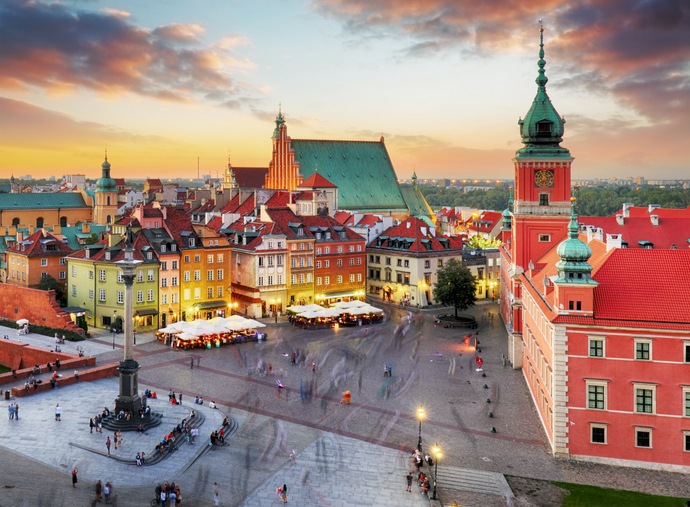Filtering Out Organic Contaminants In Water Using Electrospun Biopolymer Nanofibres - Poland
29 Nov 2021

The production of natural nanofibres and fabrics through electrospinning has recently gained attention as it allows the creation of materials with high surface area and controllable pore structure.
Scientists at the Silesian University of Technology in Poland and the Technical University of Liberec in the Czech Republic have investigated the filtering ability of TiO2 functionalized electrospun fibres made from gum karaya (GK) and polyvinyl alcohol (PVA). The study also extended to investigating how the decomposition of TiO2 nanoparticles and methane plasma treatment could affect the characteristics of the membranes.
Electrospinning is an easy and flexible way to create non-woven fibres with a high surface area to volume ratio and a porosity that can be tuned. This makes it the technology of choice for a variety of applications, especially tissue engineering. But it’s not only the porosity of the fibres that can be customised; adding silver, gold, magnetite, zero-valent iron or other nanoparticles to an electrospun membrane can improve its characteristics. For example, TiO2 can be used to enhance the membrane’s photocatalytic and filtering properties. This improved filtering ability has potential application for the decontamination of wastewater, to remove traces of organic contaminants such as industrial chemicals, pharmaceuticals and personal care products that could possibly have a detrimental effect on human health and marine ecology. Scientists at the Faculty of Energy and Environmental Engineering at the Silesian University of Technology in Poland and the Centre for Nanomaterials, Advanced Technologies and Innovation at the Technical University of Liberec in the Czech Republic have now investigated the benefits of using TiO2 functionalized electrospun GK/PVA membranes, to remove bisphenol A and diclofenac contaminants from water.1
Sample Preparation and Analysis
GK solution, with and without TiO2, was prepared using deionised water (18.2 MΩ/cm) from an ELGA PURELAB® flex system and mixed with PVA at different ratios to find the composition that gave optimal spinnability and consistent nanofibre size. The fibres, spun using a Nanospider electrospinning machine, were treated with methane plasma while maintaining continuous gas flow through the chamber, which helped remove traces of air and moisture, and keep the pressure constant during the procedure. The finished membrane was accessed through SEM/EDX morphology and thermogravimetric analysis, in addition, water contact angle measurements were performed to determine a surface hydrophilicity or hydrophobicity and the effect of UV treatment was taken into consideration.
The Results
The SEM/EDX morphology and thermogravimetric analysis showed that TiO2 nanoparticles have successfully attached to the membrane and that only a few of them were lost during the methane plasma treatment. Addition of TiO2 improved the thermostability of the material but it was still susceptible to UV/Vis radiation and easily dissolved in water. Depositing methane plasma on the surface made the material more hydrophobic and therefore less prone to dissolve when submerged in water. In addition, after the treatment, the membrane became less vulnerable to radiation, allowing it to be recovered after use.
The study also showed that the TiO2 functionalized membrane, together with UV radiation, had a much stronger ability to filter out the contaminants – bisphenol A and diclofenac – compared to the light on its own. Furthermore, kinetics indicated that the decomposition process of these pollutants could be divided into two stages, the initial one being significantly faster than the second.
Future Applications
The potential benefits of electrospun fibre membranes could be explored further, taking advantage of new technologies and other nanoparticles to functionalise the material, to improve the efficiency of filtering out unwanted residues in water. This would make a big difference for the health of both marine life and humans.
Why Choose ELGA LabWater in Poland?
The presence of impurities in laboratory water can be a major problem in research experiments, and can seriously compromise results. ELGA LabWater has been a trusted name in pure and ultrapure water since 1937. We believe in providing you with water purification solutions that can meet a wide range of needs and applications, backed by excellent service and support. For more information on our Type I ultrapure water systems, check out our PURELAB Quest, PURELAB Chorus 1 Complete and our PURELAB Flex models.
CONTACT OUR POLISH PARTNERS TODAY
Reference:
1 Kudlek, E et al. 2017. TiO2 immobilised on biopolymer nanofibers for the removal of bisphenol A and diclofenac from water Ecol Chem Eng 24(3):417-429.
